
The Swedish electric boatmaker Candela has just announced the successful completion of test flights for the Candela P-12. The flying electric ferry is now headed for serial production ahead of its upcoming commercial rollout.
Candela’s electric hydrofoil pleasure crafts are already well known, often seen flying over the surface of the water around European waterways and even in several locations in the US. The Candela C-8 electric speedboat, the company’s most advanced model to date, has set world records for endurance thanks to its incredibly efficient design.
By using computer-controlled hydrofoils to lift its boats out of the water, Candela can reduce the energy used by over 80%. That means the boats can go the same distance with just 1/5th the battery, or 5x as far with the same battery as many larger and more powerful electric boats.
The hydrofoil operation also has another advantage in that it leaves no wake behind the boat. In areas like Venice where boats are required to travel slowly in order to not create wakes that erode canal edges and buildings, Candela’s boats are permitted to travel at higher speeds.
The new Candela P-12 uses the same hydrofoil technology as the company’s other boats, but supersizes it to fit up to 30 passengers. That makes the P-12 ideal for commercial use in ferry operations while solving the main issue that has hampered the spread of commercial electric boats: reduced range.
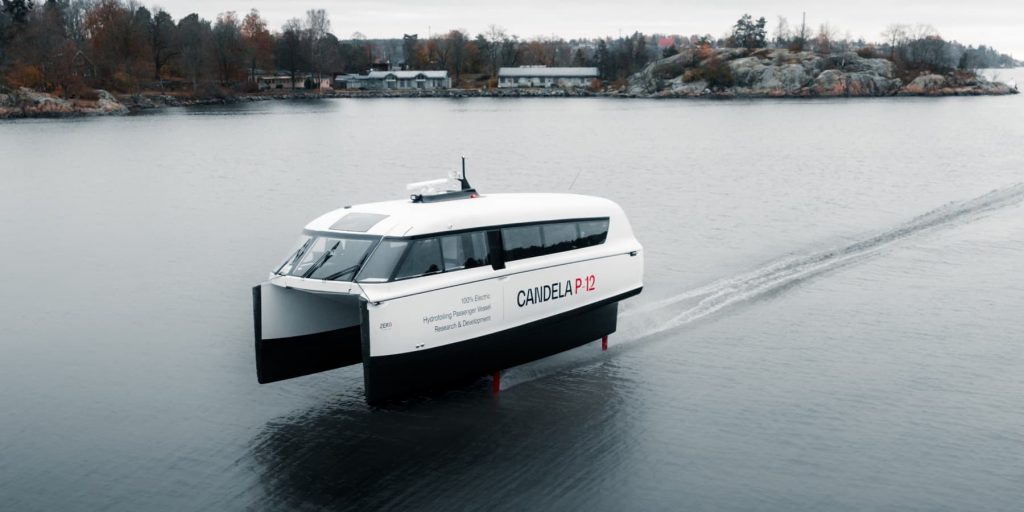
The P-12 has a range of up to 100 km (62 miles or 54 nautical miles) from its 252 kWh battery. That’s more than enough range to cover most coastal transport needs. But more importantly for commercial ferries, it can also recharge quickly with DC Fast Charging, as we’ve seen employed by Candela’s other vessels on their record-setting endurance runs.
Candela’s boats also only require a typical automotive-style DC charging station, similar to the ones you’d find in a car parking lot. That means they can use existing dock infrastructure and lower-cost chargers, unlike most commercial electric ferries that require astronomically-priced megawatt-level chargers. With a more affordable charger and the ability to use existing dock infrastructure, it makes it easier for operators to switch to electric ferries with minimal infrastructure investment.
The P-12 is so efficient that it can have a turnaround time of under two minutes per ferry stop while still using existing dock infrastructure with its own extendable boarding ramp. That quick turnaround time is thanks to the thrust vectoring of Candela’s pair of C-POD motors, developed in-house to offer a combined 340 kW (456 hp) of peak power. The thrust-vectoring provides for nimble maneuvering, even moving sideways when necessary.
According to Candela, “the P-12 is engineered to offer similar or lower initial investment costs for operators while boosting profits compared to traditional Internal Combustion Engine (ICE) vessels.”
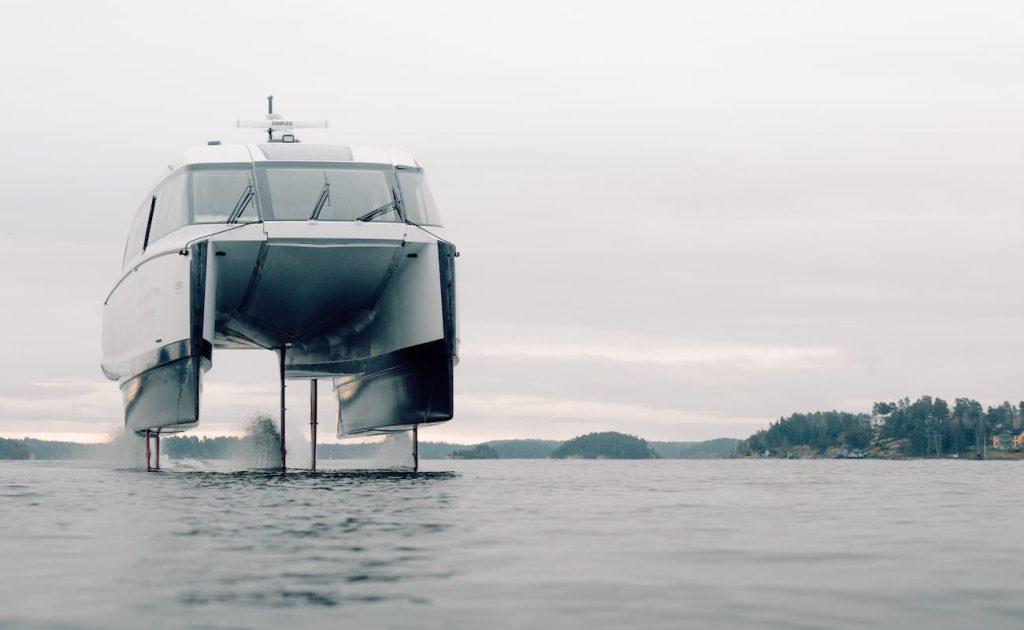
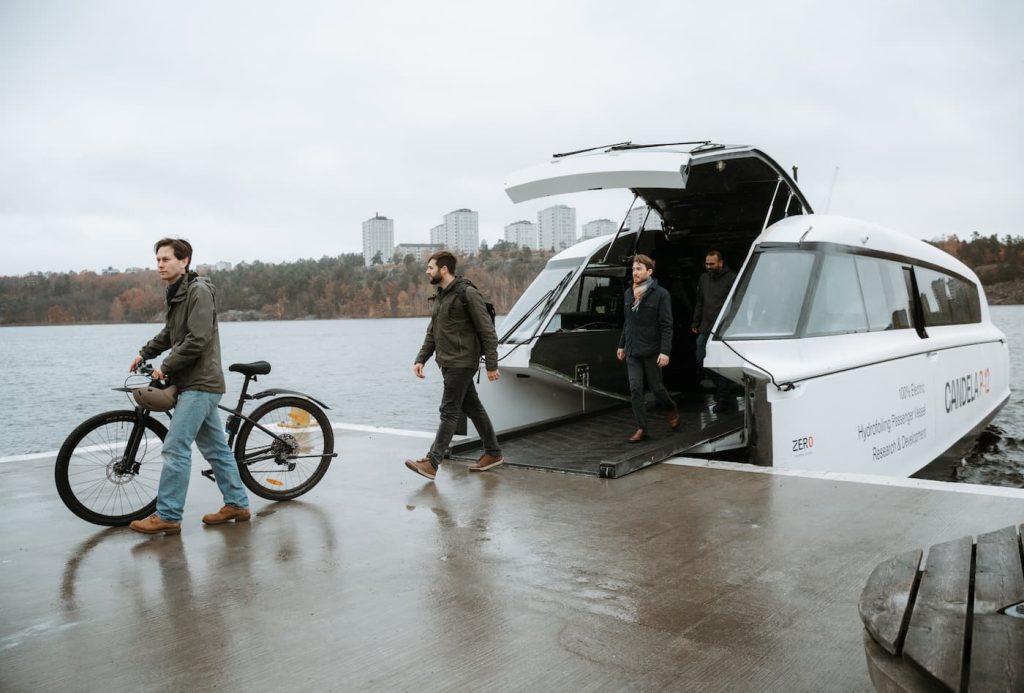
The Candela P-12 is now entering serial production, after which it will sell for €1.7 million. That’s in line with the current cost of combustion engine-powered ferries today and significantly less than competing electric ferries, according to the company. Furthermore, the lower operating expenses means that the vessel is expected to cut operators’ costs per passenger kilometer by around 50%, similar to how hybrid and electric buses have helped transportation companies significantly reduce operating costs.
As Candela’s Director for Commercial Vessels Erik Eklund explained, “With the P-12, we’re not just offering a faster, more comfortable electric alternative to fossil fuel-powered vessels. We enable operators to make the switch to sustainable vessels that are cost-effective and profitable, a crucial step towards clean oceans and lakes.”
You can see the P-12 in action in the video below.
The new vessel will be available in three variants: the P-12 Shuttle, P-12 Business, and P-12 Voyager.
The Shuttle configuration can seat 30 passengers and sets a new benchmark for sustainable commuting with the lowest operational costs in the industry. It also features space for bicycles, strollers, and wheelchairs to encourage the integration of cycling with public transport.
The Business version of the P-12 features a premium interior with seating for 12 to 20 passengers along with extra room for their luggage, and the highly adaptable Voyager version offers customers flexibility in interior design, catering to both private leisure and commercial clients.
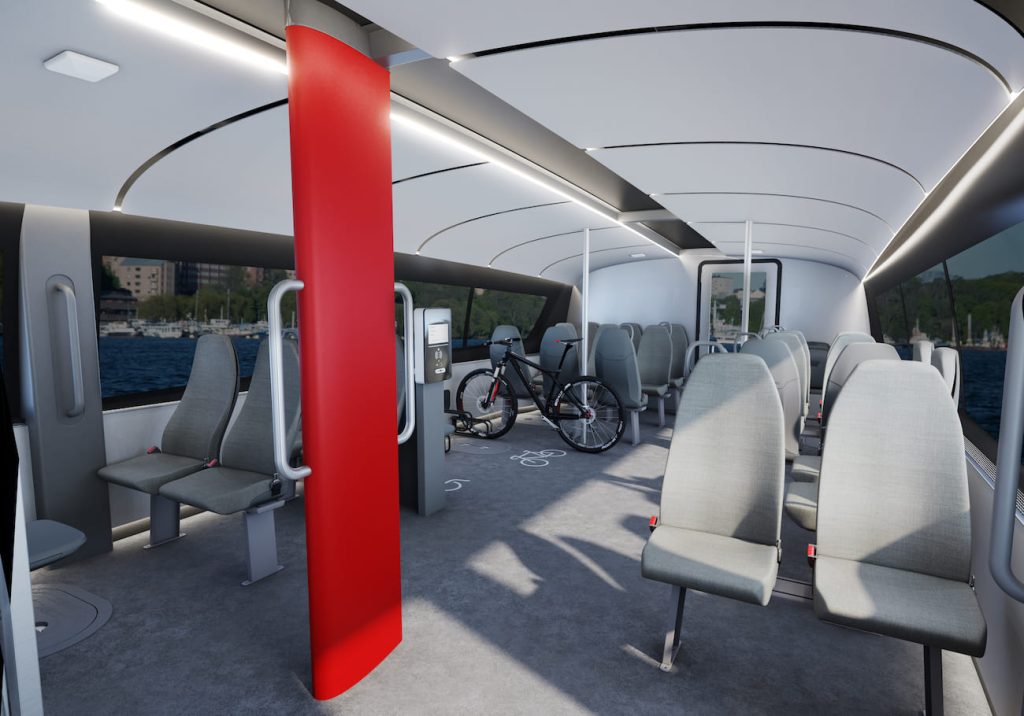
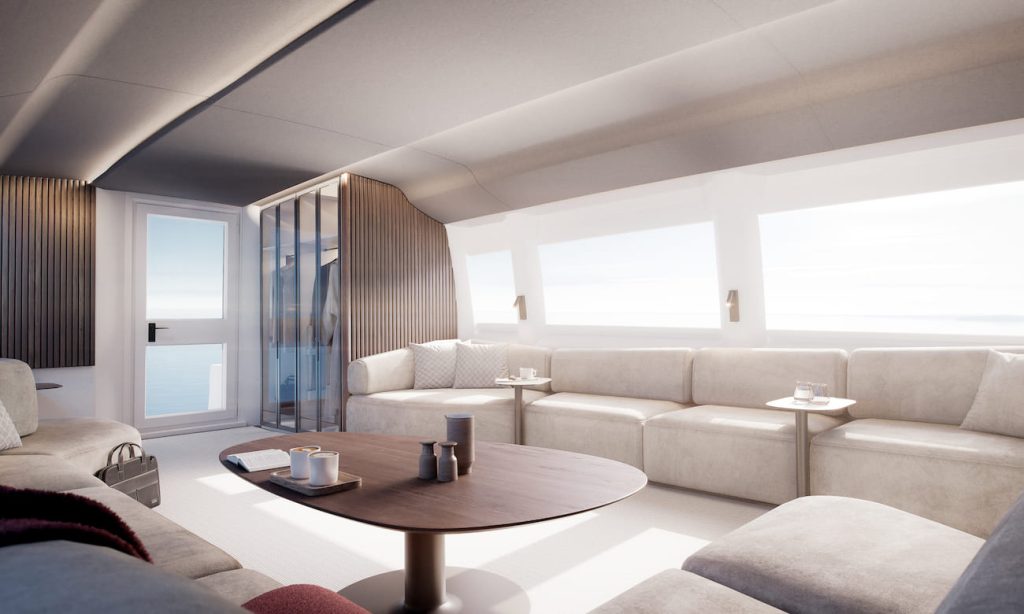

Electrek’s Take
This is some James Bond stuff, if I’ve ever seen any. It looks like it should have been in the last movie. I know it’s meant to shuttle us average Joes around affordably, but that business version should be someone’s waterborne lair.
On a serious note though, I’m loving the proliferation of hydrofoil electric boats. It just makes so much sense to cut your energy requirements by over 80% simply by lifting the boat out of the water. I mean, I say “simply,” but of course the magic that makes this work is anything but simple. Hats off to the folks at Candela who have made it look this easy though. As some of my readers may remember, I’ve tested a few Candela hydrofoil electric boats in Sweden, and I can confirm that it really is bizarrely easy to pilot them. The testing video is below, for proof.
Taking this electrically-powered hydrofoil watercraft technology to commercial operators is the obvious next step and I’m glad to see it finally happening.
FTC: We use income earning auto affiliate links. More.





Comments